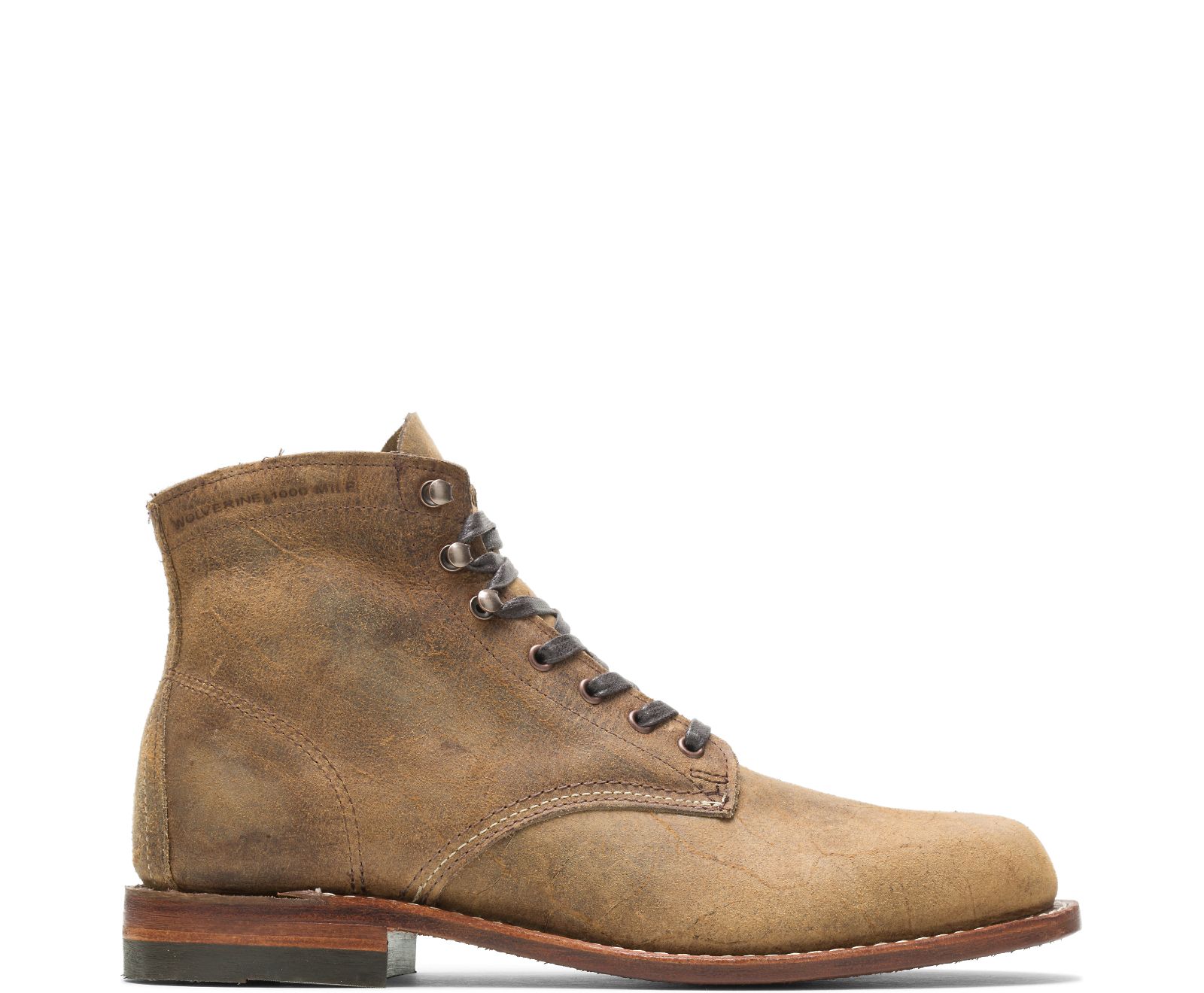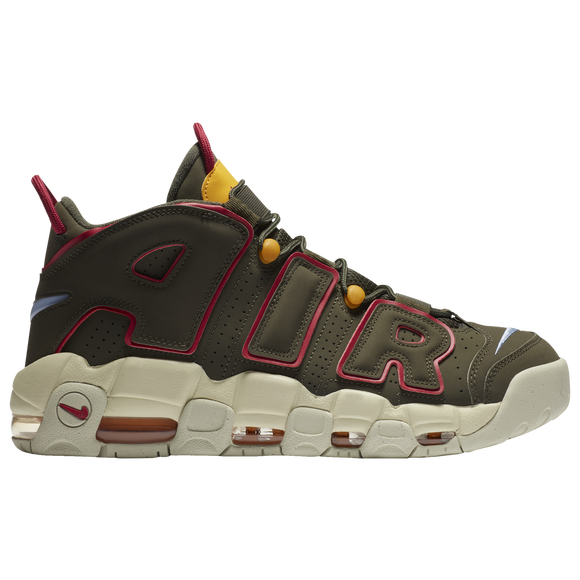Men – Original 1000 Mile Boot – Rough Out – 1000 Mile
Timeless patterned recreated from the first 1000 Mile shoe introduced in 1914, crafted with the same attention to detail and quality craftsmanship. Handcrafted in Big Rapids, Michigan, USA with U.S and globally sourced materials. Rough out leather upper made by Charles F. Stead of England.
SPECS & TECH
• Timeless patterned recreated from the first 1000 Mile shoe introduced in 1914, crafted with the same attention to detail and quality craftsmanship
• Handcrafted in Big Rapids, Michigan, USA with U.S and globally sourced materials
• Rough out leather upper made by Charles F. Stead of England
• Time-tested Goodyear™ welt construction for durability and flexibility. This construction also allows the boot to be resoled
• Traditional stacked leather outsole with Vibram heel
• Signature contrast welt stitch
• Unlined
• ¾ Leather sock insert
• Flat waxed cotton laces






by Mike
This is my 2nd pair of 1000 Mile Boots. While the first pair doesn’t have quite 1000 miles on them, I like the look and feel of those smooth leather boots very much. These rough or flesh-out leathers are great, too. The smooth ones I keep for “dressier” occasions (when normal folks might wear a tie I just tuck in my shirt tails and tie up those boots). The rough out I now use for my walk to work when no fancy is required. And in Seattle this winter I’ve had ample opportunity to test their water-shedding and they do fine. The smooth leather has a separate internal leather lining which the rough out ones don’t. Not having that makes slipping on the boots slightly more difficult – tends to hang on wool socks – but not awful and no problem once they’re on.
by Bill
I’ve had these boots for a just a few days and worn them every day. They are built on the same Last as the regular 1000 Mile boot, so the fit is about the same. That said, they don’t feel as butter-soft on your feet as the std 1000 because the leather is a little rougher, even on the inside.
Also, the laces are shorter and because they are waxed cotton, they don’t stayed tied as well.
All that being said, they are well made, durable and good looking.
by Jones
From the moment I opened the box I knew I had made the right decision. These boots live up to all of my expectations, the rough out leather is AMAZING ! Break in period was almost nonexistent for me, they have been super comfortable since step number one….. I look forward to the years of service these boots will most certainly provide! Great job WOLVERINE on partnering with Charles F Stead.
by Rick
size was as expected, 1/2 size down from Brannock. the roughout leather is really wicked looking and very unique. Sadly, after about a week the left one developed a loud clicking noise that i believe is due to the shank becoming loose or some other internal thing. i’ll probably try another pair at some point.
by Trekker
These are quality shoes with a like price but worth every penny. Fit is precise as possible without being hand fitted and because they are all quality leather there will naturally be a break in period for ultimate pairing with your feet. While this is happening, the shoes remain comfortable.
by Patrick
I purchased these boots about 3 weeks ago and have been wearing them every day since. It is my first pair of Wolverines and I am a convert for life now. They feel and look better than any other boots I have ever owned. Even right out of the box I found there to be very little break in time, if any. Within about 1 week of daily wear they were fully formed to my feet.
I love the look of this Rough Out style and they are only getting better with time and wear. Even after only 3 weeks they have already aged and darkened in color which I love. Others who want to keep them as fresh as when they bought them may have trouble though.
I read other reviews that suggested to size down half a size so that is what I did and it worked perfectly. I am usually a 10.5/11 in other shoes but purchased a 10 in these and they fit well with just enough room to fit wool socks when I want to. As expected with any leather souled boot, these offer pretty little in the way of insulation from the cold. I would encourage wearing wool socks if you will be wearing these out in temps lower than 40˚.